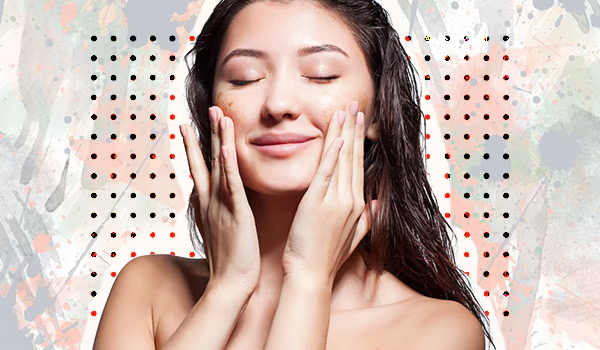Exfoliation is a beloved skincare step that promises smoother, brighter skin. But what happens when you go too far? Over-exfoliation can damage your skin barrier, leading to irritation and even premature aging. Understanding the delicate balance between beneficial exfoliation and harmful over-exfoliation is key for maintaining healthy skin. In this post, we’ll explore the fine line between effective skin renewal and overzealous scrubbing, ensuring your skin gets the glow it deserves without the unwanted side effects.
Why Exfoliation Matters for Your Skin
Exfoliation is the process of removing dead skin cells from the surface of your skin. It can be done mechanically, with scrubs and brushes, or chemically, with acids and enzymes. This process helps unclog pores, reduce acne, and improve skin texture, leaving you with a refreshed and glowing complexion. Regular exfoliation encourages cell turnover, which can make skin look more vibrant and youthful.
Adding exfoliation to your skincare routine can also enhance the efficacy of other products. By clearing away the dead skin cells that can block absorption, your serums and moisturizers penetrate more deeply, delivering active ingredients where they’re needed most. This can lead to better overall results from your skincare regimen.
However, while exfoliation is undoubtedly beneficial, it’s crucial to remember that moderation is key. Too much exfoliation can lead to more problems than it solves, making it essential to find the right balance for your skin type.
Signs You Might Be Over-Exfoliating
Recognizing the signs of over-exfoliation is the first step to reversing any potential damage. One of the most common indicators is redness and irritation. If your skin feels tender or looks inflamed after exfoliating, it might be time to reevaluate your routine.
Another sign is increased sensitivity. Over-exfoliated skin can become more reactive to products that never caused issues before. If you notice stinging or burning when applying your usual skincare items, it’s a clear signal that your skin might be compromised.
Finally, pay attention to dryness and peeling. While exfoliation aims to remove dead skin, excessive exfoliation can strip away too much, leaving your skin feeling parched and flaky. This can lead to an uneven texture, making it challenging to apply makeup smoothly.
The Science Behind Skin Barrier Function
Your skin barrier, or stratum corneum, is the outermost layer of your skin. It serves as the first line of defense against environmental aggressors and helps maintain hydration levels. A healthy skin barrier keeps moisture in and harmful substances out, ensuring your skin remains resilient and balanced.
When you over-exfoliate, you disrupt this essential barrier. Without its protective function, skin becomes vulnerable to irritants and moisture loss, leading to a cycle of damage and repair. This can result in chronic issues like redness, sensitivity, and even the exacerbation of conditions like eczema and rosacea.
Maintaining a strong skin barrier is crucial for overall skin health. It allows your skin to function optimally, keeping it looking and feeling its best. Gentle exfoliation can support this process by removing only the superficial layer of dead cells, allowing the barrier to remain intact.
Choosing the Right Exfoliant for Your Skin Type
Selecting the appropriate exfoliant for your skin type can make all the difference in achieving a healthy glow without compromising your skin’s integrity. For those with sensitive skin, enzyme-based exfoliants are a gentle option that can effectively polish the skin without irritation.
If you have oily or acne-prone skin, beta hydroxy acids (BHAs) like salicylic acid can penetrate deeply into the pores, helping to reduce excess oil and prevent breakouts. They’re also great for those looking for an acne safe makeup routine, as they help clear the skin, ensuring a smoother application of cosmetics.
Normal to combination skin types may benefit from alpha hydroxy acids (AHAs) such as glycolic or lactic acid. These exfoliants help improve texture and tone, enhancing your skin’s natural radiance. Just be sure to start slow and observe how your skin reacts before increasing frequency.
Tips for Exfoliating Effectively and Safely
To exfoliate effectively and safely, it’s essential to listen to your skin’s needs. Start by exfoliating once or twice a week, then adjust based on your skin’s response. Less is often more when it comes to maintaining a healthy complexion.
Always follow up with a moisturizer to replenish any lost hydration. Exfoliation can temporarily disrupt your skin’s moisture levels, so keeping it nourished is crucial for recovery and protection.
Lastly, never forget sun protection. Exfoliated skin can be more susceptible to UV damage, so applying a broad-spectrum sunscreen daily is non-negotiable. This will prevent further harm and keep your skin looking youthful and vibrant.
Conclusion
Finding the right balance in exfoliation is a personalized process that requires attention and care. By understanding the dangers of over-exfoliation and following these guidelines, you can enjoy the benefits of a radiant complexion without compromising your skin’s health. For more personalized advice on skincare routines, consider consulting a dermatologist who can tailor recommendations to your specific needs. Remember, your skin is unique, and taking the time to treat it kindly will always pay off in the long run.
